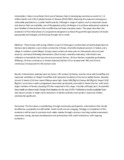| dc.description.abstract | Introduction: Indoor air pollution from use of biomass fuels in developing countries accounts for 1.6 million deaths and 2.6% of global burden of disease (WHO 2002). Reducing this exposure among poor, vulnerable populations is a public health priority. Although a range of options such as improved stoves and cleaner fuels are available, one of the greatest policy challenges is to achieve widespread uptake by poor families of interventions that are effective and meet everyday needs. This paper describes the evaluation of the initial phase of a programme designed to achieve this goal through adoption of locally appropriate technologies and financing through micro-credit.
Methods: Thirty homes with young children in each of three poor communities all mainly dependent on biomass were selected, a peri-urban community in Kenya, internally displaced persons in Sudan, and a village in northern central Nepal. Surveys were carried out twice prior to intervention (dry and wet seasons), and twice following interventions (final surveys currently underway). Information was collected on household, fuel use and socio-economic factors, 24-hour kitchen respirable particulates (PMresp), 24-hour continuous (1 minute intervals) kitchen CO co-located with PM, and 24 hour continuous CO exposure for the woman cook.
Results: Interventions selected were (a) Sudan: LPG cookers (b) Kenya: ceramic stove with hood/flue and improved ventilation (c) Nepal: hood/flue with improved insulation of dry-stone walled homes. Baseline (round-1) levels of 24-hour mean PMresp were high: Sudan 980 Āg/m3, Kenya 650 Āg/m3, Nepal 1260 Āg/m3. Local micro-credit arrangements have been particularly successful in Sudan thus far, with much larger numbers of homes adopting LPG than expected at this stage. Crucially, although poor, households have made an almost total change from biomass to the use of LPG. Preliminary results available from wet season surveys in Sudan show reductions in kitchen pollution and women's exposure (Table), (statistically significant).
Discussion: This first phase is establishing, through community participation, interventions that should be effective, acceptable and affordable. Initial results are encouraging. Findings on completion of this evaluation will be used to promote much wider uptake through a process involving market assessment, awareness raising, business development and partnerships with credit institutions, with ongoing evaluation. | en_US |

